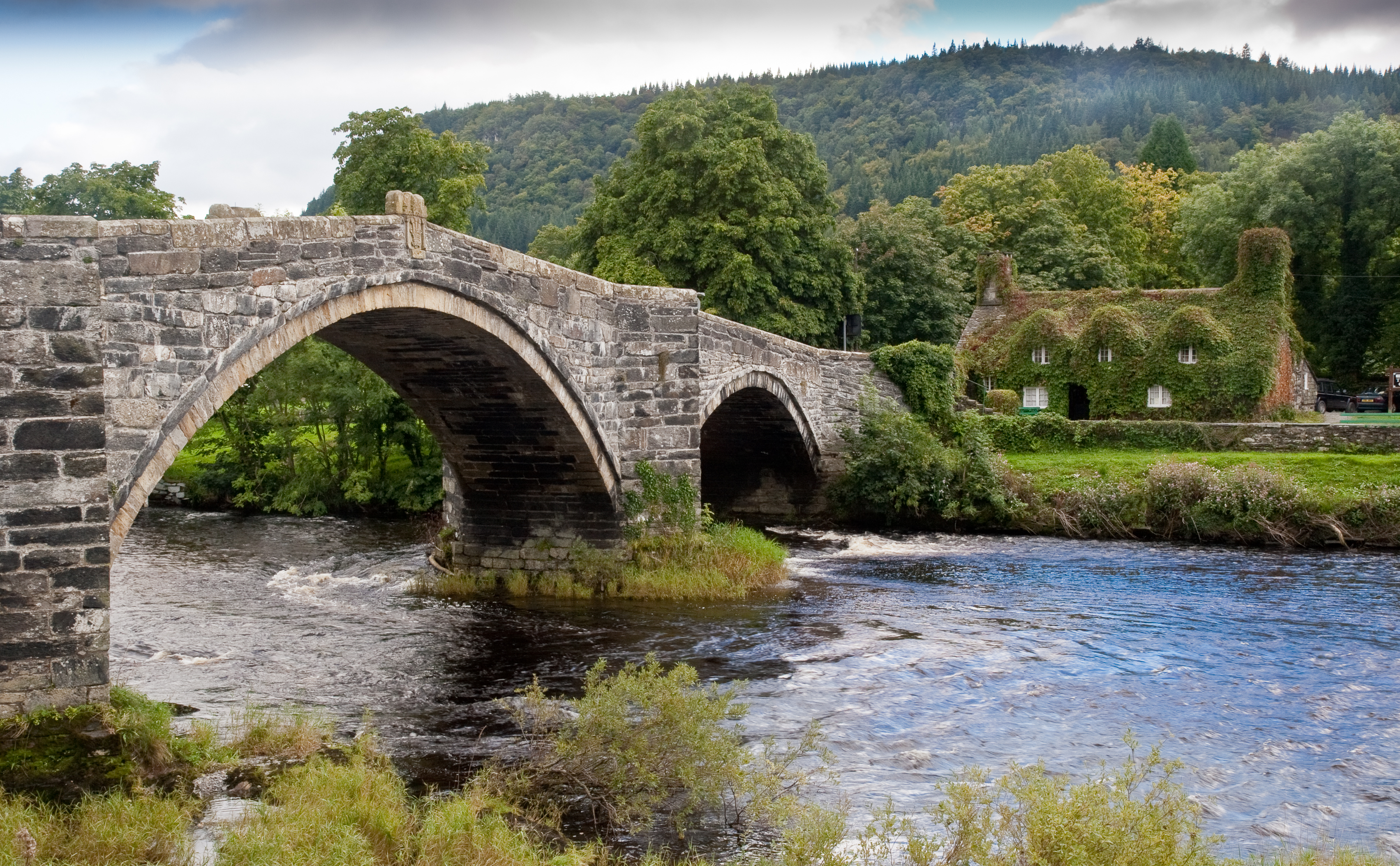The rural town of Llanrwst is a classic welsh settlement, complete with medieval pubs. Located in the heart of the Conwy Valley, It was named for the 5th,6th century patron, Saint Grwst. Historically, Llanrwst was famed for its wool trade, the town burst into life when after the construction of Conwy Castle by Edward I ‘The Long Shanks’, Welshmen were not allowed to trade within 10 miles of the fortress. Which meant Llanwrst was perfectly placed as a trade hub for the North Wales region.
The famous stone bridge of Llanwrst, designed by Inigo Jones. Connects the town with the Gwydir Manor House, a famous ivy covered building which people come from all over the UK to marvel at its beauty. The ivy-covered cottage of Tu Hwnt I’r Bont tearooms is a popular beauty spot, where you can enjoy a spot of tea.
In 1276 Llanwrst was declared a free borough from the diocese of Llanwy by Llewellyn the Last. The people of Llanwrst thereon considered it independent of Wales. The town council even applied for a seat on the UN Security Council. (Don’t worry, this didn’t hold up! You won’t need your passport to go to Llanrwst!)
Those visiting Llanwrst might want to explore the surrounding areas for a spot to eat or drink, there are a multitude of brilliant establishments dotted around which can provide a quality beverage and awesome pub food, and for those wishing to stay a bit longer and explore the local area there are some wonderful hotels in Snowdonia and Betws Y Coed to stay. Betws Y Coed is a picturesque town not too far from Llanrwst, that is bursting with beauty that you will be hard pressed to find anywhere else. Sitting snuggly in the heart of Snowdonia, Betws Y Coed can be just as idyllic as Llanrwst for being your adventure base camp.
Both Llanrwst and Betws Y Coed are incredibly popular walking spots, as there is plenty to see in both. The natural splendour of these town’s surrounding areas means that there are many public footpaths, boasting views of Snowdonia, the Carneddau Mountains, and of the long Conwy and Ogwen valleys. The rich green glades of Llanrwst are home to grazing sheep and cattle, if you look into the hedgerows beside the footpaths, you may be able to spot growing wildflowers. This is also a popular area for owls, other birds of prey and different forms of fauna. The town is considered the gateway to Snowdonia national park.
The river Conwy is a free flowing river enjoyed by many water sports enthusiasts.
